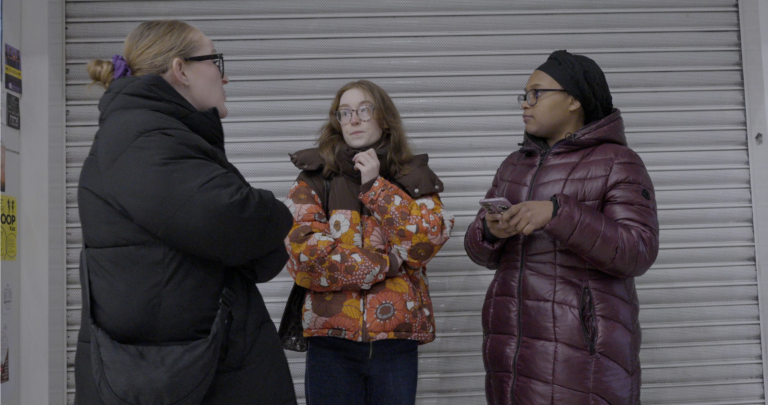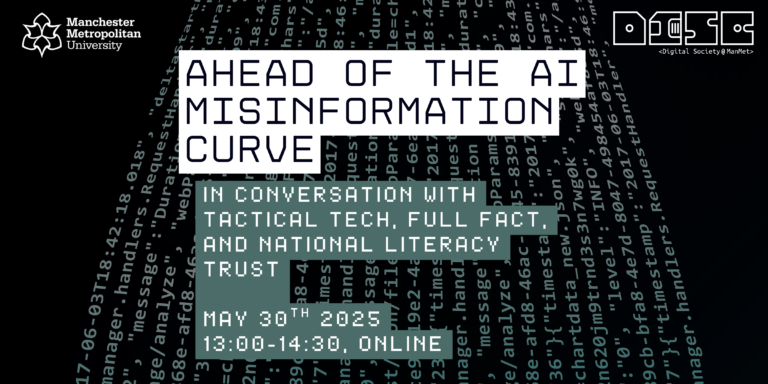Tree Equity Day ‘Voices of the Future’
Tree Equity Day was attended by representatives from DEFRA, Natural England, the Community Forests, the Tree Council, the Chartered College of Teachers and the National Trust

Kate Pahl summarises the Tree Equity Day at the Grosvenor East building at MMU on Monday 22 July 2024.
The day was attended by a number of stakeholders including representatives from DEFRA, Natural England, the Community Forests, the Tree Council, the Chartered College of Teachers and the National Trust.
Key findings:
Our project was particularly concerned with diversity and multilingualism.
We also focused on children and young people finding the curriculum themselves, through their involvement in treescapes. In this way we were learning from their learning from eco-systems. We also need to learn from young people what they need to take environmental action. Interdisciplinarity is at the heart of this.
Working across disciplines including landscape architecture can produce a new kind of knowledge which is able to develop, in partnership with policy-makers, a way forward to describe the involvement of children and young people, particularly those from diverse backgrounds, in Treescapes.
Schools are sites of support and inspiration for this work, and their grounds can be developed, in collaboration with organisations such as the Community Forests, for further Treescapes. Designing and planting treescapes, as well as maintaining them, is a useful way of engaging children and young people in practical activities.
We still do not know much about trees in urban settings and our project is designed to further that knowledge, both of their carbon capture and their potential for becoming key to children’s own stories of trees.
Woodland methodologies, as described by The Mersey Forest, offer ways of measuring and thinking about trees as well as engaging with treescapes.
A relational connection with treescapes offers a way forward to collectively imagine a better future.
Tom Johnson, Headteacher, Seymour Park
This part of the Voices of the Future project involved 90 children in designing, planting and caring for a small woodland in an area next to a large multilingual Primary School in Old Trafford.
Caitlin Nunn, Voices of the Future, the Tree of Hope Research group
This project involved creating a space of practice for Global Youth to develop their own relational experience of treescapes through a sensory methodology and created the opportunities for a tree to be planted in Longford Park along with a Park Bench.
David Cooper, Voices of the Future, Finding Treescapes in the English Curriculum
This part of the project included a curriculum development project with a teacher in Shropshire together with an exploration of the potential for English and a discovery of the natural world to transform practice in an Early Years FE context. The expression, ‘Trees make place and places make trees’ was important as well as the idea of Tree Cultures.
Discussion
We discussed in small groups – key themes were:
- Interdisciplinarity and how the university needs to change in order to work across disciplines, and the universities are not good at that. We discussed the idea of the Collective Knowledge Economy and how to make it work for this kind of knowledge production practice.
- Place-based work. Thinking through ideas such as woodland methodologies and play creates the idea of a commons of thinking. It might involve place-based thinking.
- Social value of Treescapes. Discussion of the idea of the social value of investments in terms of health and the move to Green Social Prescribing.
Panel
- Cheryl Willis Natural England. Talked about different forms of evidence and how we bring unheard voices into our understanding. She talked about the People and Nature survey that Natural England did and how the results were encouraging – 74% of children spent time in Nature. What they do know is that Treescapes support children in terms of physical activity and mental health and connecting children and young people with treescapes is important. She was interested in accessibility and inequalities in children’s access to Treescapes. She was also interested in the other things treescapes did such as provide spaces to play, shelter, birds and biodiversity. Care and stewardship is up in her survey with 84% of children and young people looking after the natural environment.
- Richard Bridge, DEFRA. The work we have been doing on Voices of the Future is a fantastic start. We need to do more active listening and listening in a way which is not tokenistic. Children and young people are not included in the protected characteristics group which is something we need to think about. Involving children and young people in woodland creation and woodland management is important. We need to go beyond an Ecosystem services approach. Also, a key group is children and young people who are neurodiverse and we could think about that. Moving into concept of belonging and removing economic barriers and issues of accessibility to woodland – the majority of English Woodlands are closed to the public.
- Dave Armson, Mersey Forest. When you watch children and young people’s involvement in Treescapes, they love it. Need to provide more engagement for children and young people to have free and unfettered engagements with treescapes. The concept of ‘running in happiness’ is very important. Children and young people’s physical engagement in treescapes is very important.
- Karen Salt, Professor of Place, Culture and Communities, Man Met. Where does futurity sit – what is the next generation thinking about – issues of care and repair. Place-based Leadership is important. Young people as place-based leaders. Questions of intergenerational justice and hope. Thinking about the collective governance of the future – young people should be involved in that.
To find out more, contact Professor Kate Pahl, Department of English, Manchester Metropolitan University on k. pahl@mmu.ac.uk


